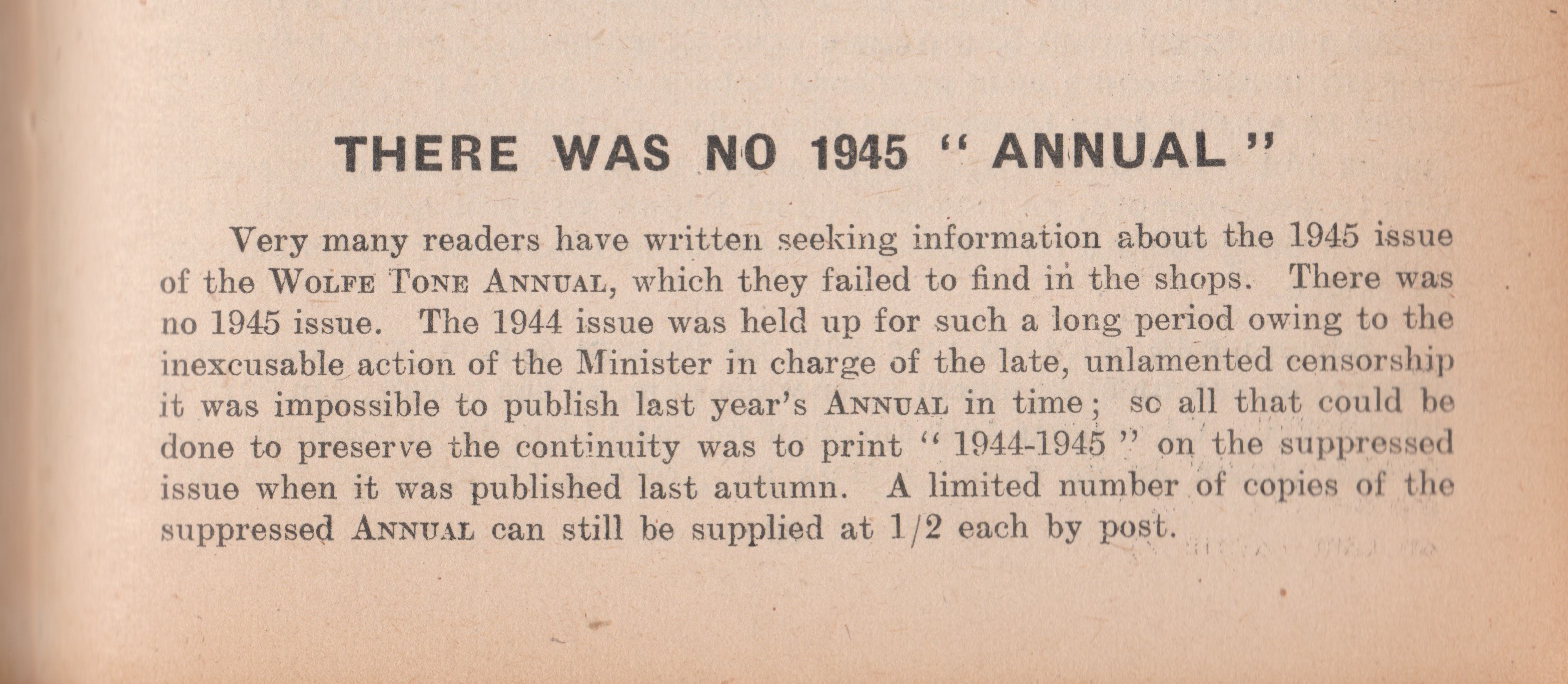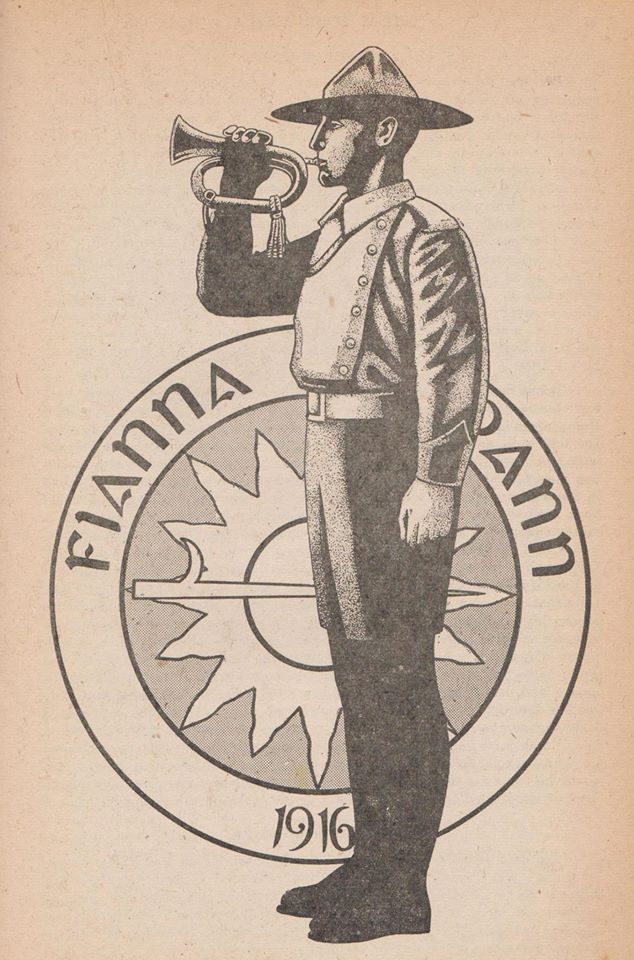
Rare photograph of Fianna Eireann stalwarts, (L-R) Pádraig Ó Riain (1893-1954) and Bulmer Hobson (1883-1969)
These two individuals were probably the two most influential figures in the establishment and early days of Na Fianna Eireann.
Bulmer Hobson was the co-founder of Na Fianna along with Madame Constance Markievicz, and Pádraig Ó Riain was its first treasurer (and later secretary).
While Markievicz was the inspirational figurehead in the movement, both Hobson and Ó Riain were the brains and driving force behind the successful running of the Fianna from 1909-1916. They were skillful organisers and administrators, and also both excellent propagandists in the Fianna’s formative years. They worked tirelessly and devoted all their spare time to promoting and advancing the Fianna organisation.
Hobson was, of course, at this time on the Supreme Council of the IRB and then secretary of the Irish Volunteers upon its formation in 1913. He was a prominent member of Sinn Fein from 1907, and at one time its vice-President. He was also a member of the Gaelic League and the GAA.
Pádraig Ó Riain was the one responsible for putting together the first Fianna Handbook in 1914, and had a weekly column in the Irish Volunteer newspaper, under the pseudonym ‘Captain Willie Nelson’. He had also had a number of articles published in the IRB paper ‘Irish Freedom’.
Ó Riain was also a member of the IRB, and was secretary of the Fianna circle, using the cover name ‘The John Mitchell Literary and Debating Society’. In 1913, upon the formation of The Irish Volunteers, Pádraig Ó Riain was co-opted onto its first Provisional Committee. He was also a prominent member of the Gaelic League.
He led the Fianna detachment at the Howth Gunrunning in 1914. At the 1915 Fianna Ard Fheis Ó Riain was elected ‘Chief of the Fianna’ (Ard Fheinne), with Hobson as Chief-of-Staff. With Hobson busy with other Irish Volunteers duties, Ó Riain also took on much of the work of Chief of Staff on Hobson’s behalf.
Former Fianna member Eamon Martin later recalled that Ó Riain had a “capacity for orderly organisation, which was exercised to such advantage to the Fianna in the succeeding years”.
During the 1916 insurrection Hobson was famously kidnapped by others in the IRB, to prevent his attempts to further cancel mobilisations of Volunteers. He was closely aligned with MacNeill, and had, as many said at the time, MacNeill’s ear and was behind MacNeill’s attempts to call off manoeuvres on Easter Sunday. He had also previously fallen out with Clarke and MacDiarmada following his vote to accept Redmond’s nominees onto the Irish Volunteer Executive in 1914.
The two men both took a step back from their revolutionary activities post-1916, although Hobson’s decision to reduce his participation was not entirely by choice, as he was side-lined by many other former comrades and revolutionaries, although not by those in the Fianna, following his failure to support the Easter Rising. He had always advocated defensive, rather than offensive, warfare and argued for guerrilla tactics in any future conflict with the British, which interestingly was adopted by the Irish Volunteers/IRA in 1919-21. As far back as 1909, he promoted this approach, as was shown in his pamphlet that year entitled ‘Defensive Warfare: A Handbook for Irish Nationalists’. A quote from the paper reads “We must not fight to make a display of heroism, but fight to win.”
Following 1916, Hobson went back to his previous career, writing and printing, and later became a civil servant following the establishment of the Free State. In many early accounts of the revolutionary period, he was often excluded entirely or his role downplayed. Recent narratives of the era, have begun to recognise his role, particularly with Fianna and the Irish Volunteers in their formative years. Hobson died in 1969.
Ó Riain, who was sent to Tyrone just prior to Easter Week to assist in organising Volunteers in preparation for the upcoming rebellion, drifted out of the movement in the aftermath of 1916, and ended up staying in Ulster and later became a bookmaker in Belfast, for a short period. In later years, Ó Riain was one of the founders of greyhound racing in Ireland. Sadly he lost touch with many of his former comrades during this time.
He later lived in Bangor, Co. Down and passed away in 1954.
*I hope to write a separate and longer biography of O’Riain at a later date.
Photo credit: Keogh Brothers, Dublin. Part of the Bulmer Hobson Photographic Collection at the National Library of Ireland
Not dated but circa 1914-15








